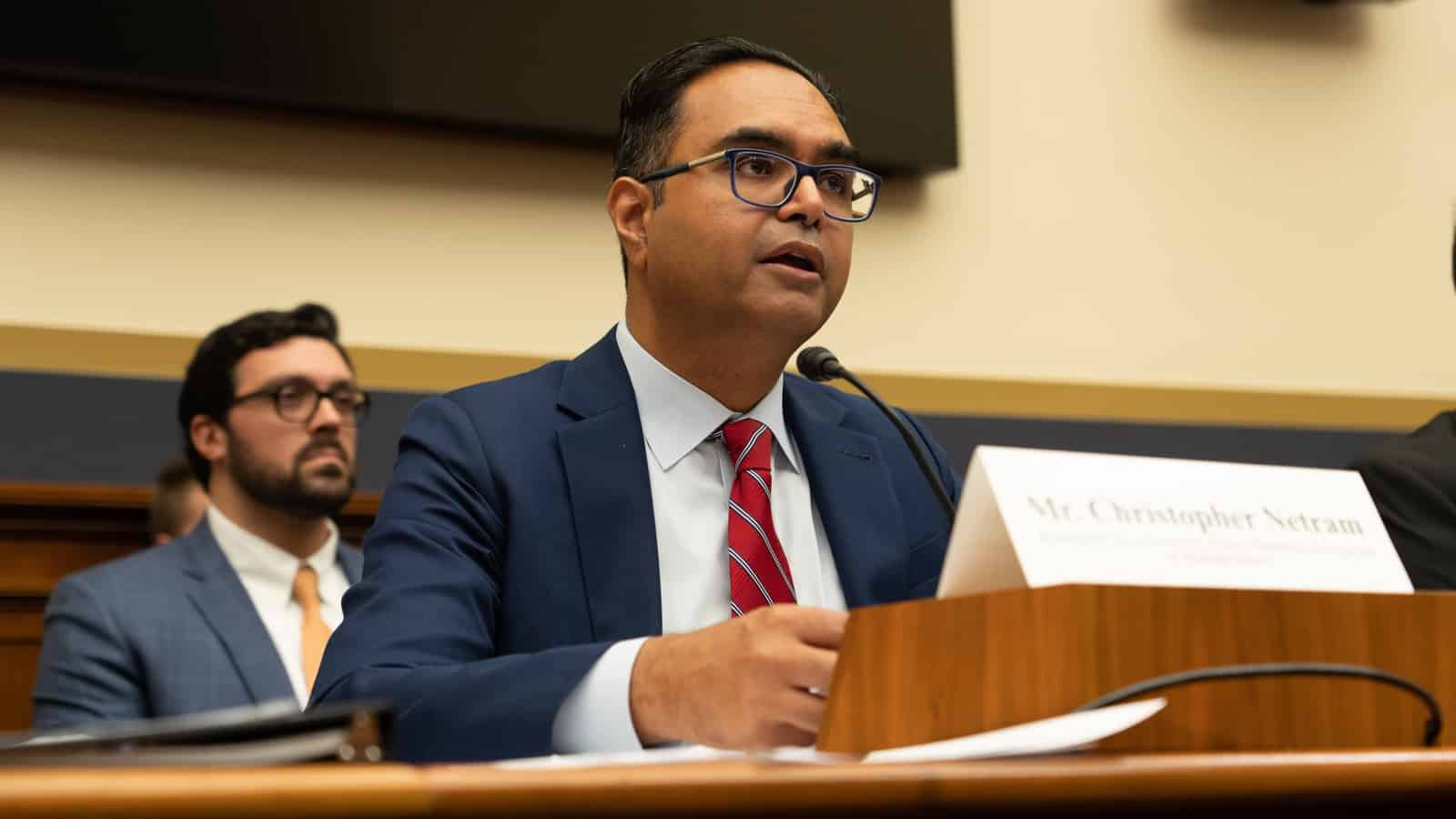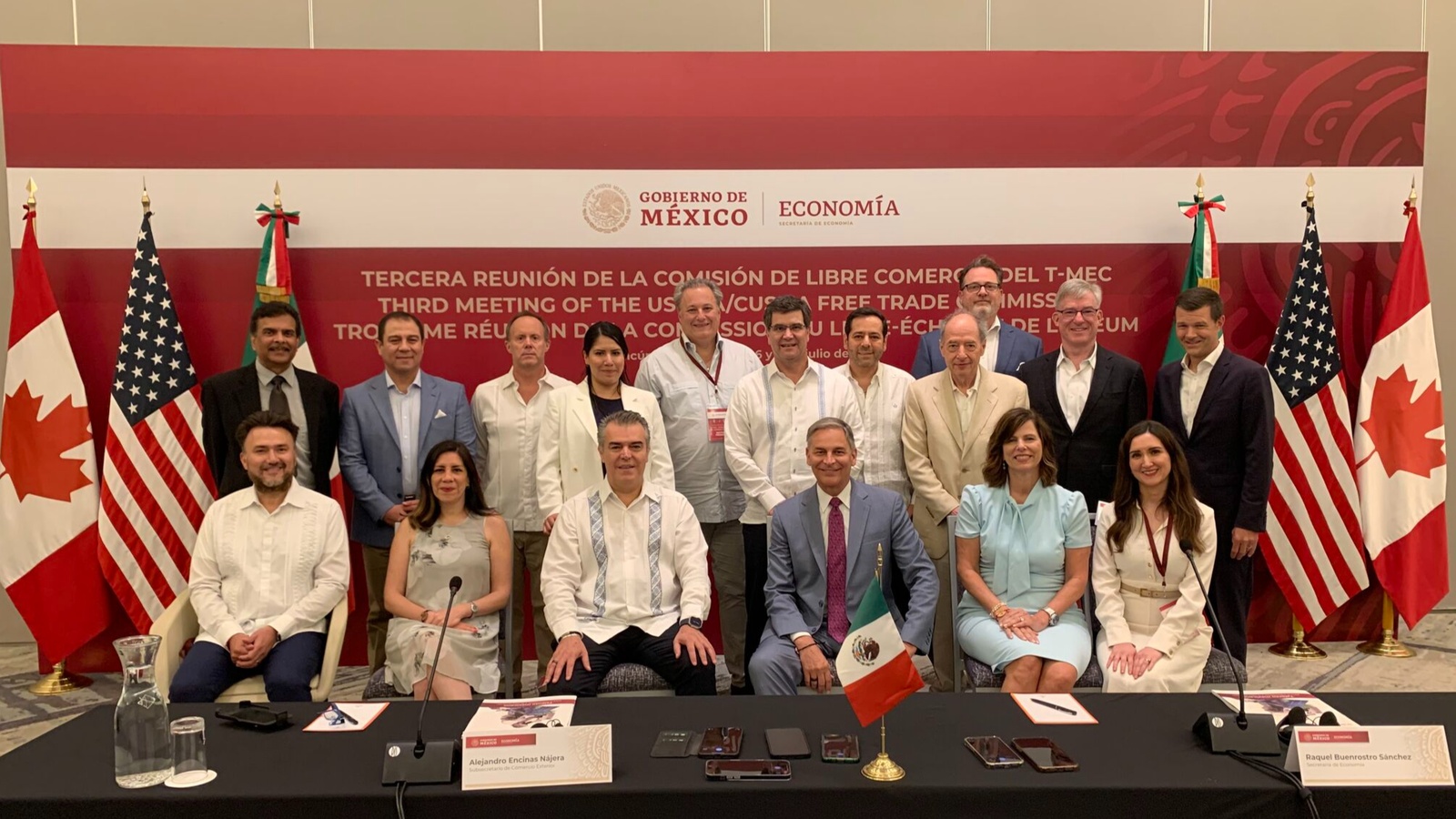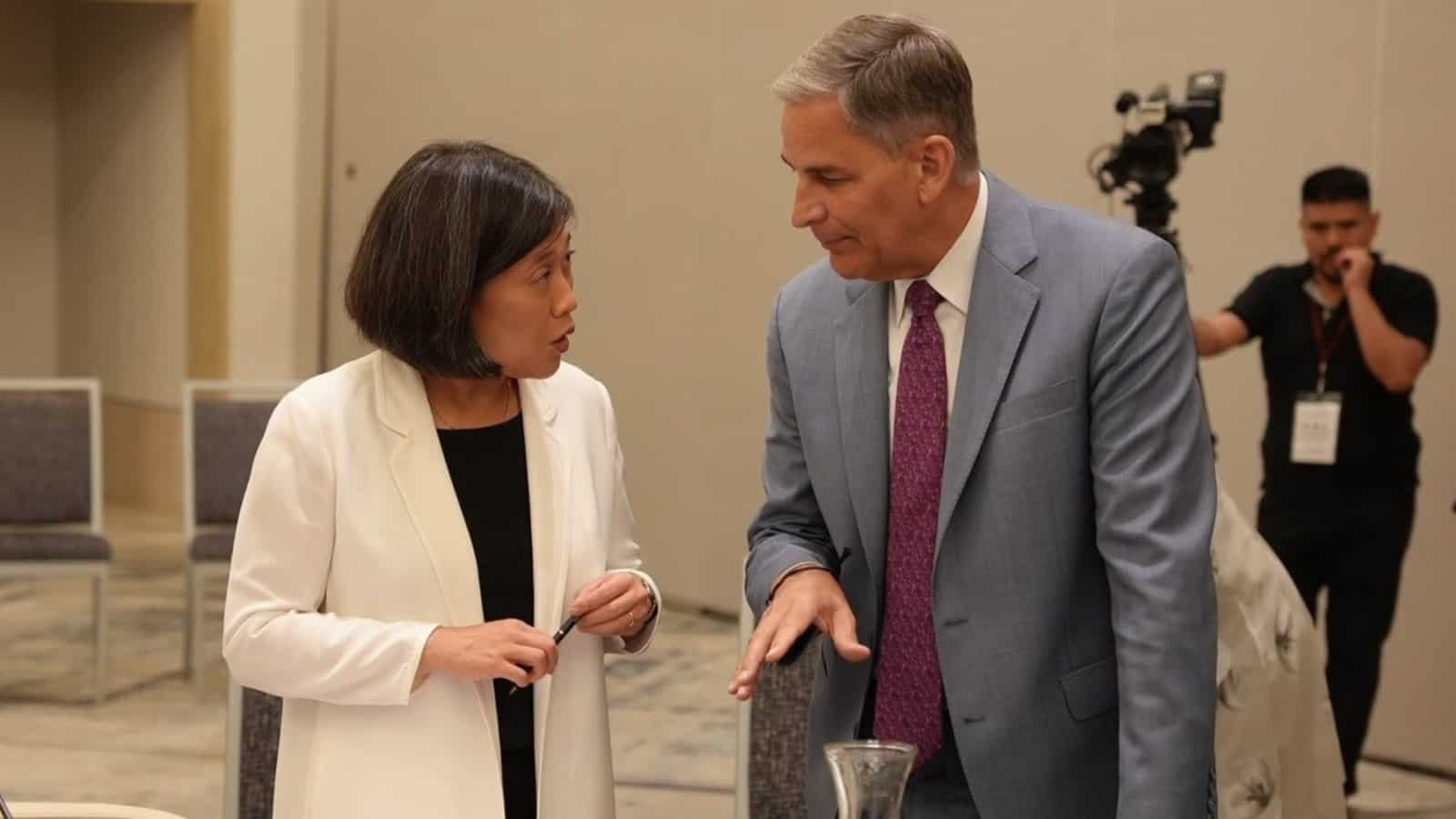Illinois Chemical Industry Warns Against New EPA Standard

The chemical industry has a wide reach. According to Mark Biel, CEO of the Chemical Industry Council of Illinois, 96% of products made in the United States are either manufactured by the chemical industry itself or using materials it produces.
- “We make everything from cell phones to packaging,” said Biel. “People don’t realize the integral role that chemistry plays in their lives.”
And for Illinois in particular, the chemical industry isn’t just making products—it’s making careers.
- “Our state has 46,000 people in the chemical industry, and the average wage is a little over $114,000,” said Biel. “We are the second largest manufacturing sector in Illinois, which is the fourth largest chemical processing state. Folks don’t realize how large and important the chemical industry is to Illinois.”
But as the Environmental Protection Agency considers imposing a new, stricter air quality standard for particles called PM2.5, chemical manufacturers in Illinois are sounding the alarm. According to Biel, the new regulations misunderstand the situation—and threaten to cause irreparable harm for manufacturers across the state.
The background: Manufacturers have long been committed to reducing particulates in the air, including PM2.5, and have made huge strides over the past half-century. But to further reduce PM2.5 will be a tall order.
- “We should be focused on enforcing the regulations we already have in the books,” said Biel. “The U.S. already has strong regulations in place—ones that many areas are still working to meet. Let us be smart about new regulations, which means we should not change air permitting before meeting current standards.”
The local angle: For the chemical industry in Illinois, the changes could be particularly damaging.
- With access to waterways, relatively inexpensive electricity and extensive natural gas pipeline infrastructure, the St. Louis and Chicagoland areas of Illinois are hubs for the national chemical industry.
- However, if the EPA’s standards become stricter, it could deter investments to these metro areas significantly.
- “It’s difficult enough to permit a new facility in the Chicagoland area, and when you throw on additional burdens, it makes it harder and harder to justify making the investment in these facilities,” said Biel.
The global stage: Especially at a time when many manufacturers are looking for ways to bring investments and supply chains back to the United States, this kind of onerous regulation could create a stumbling block.
- “Our lawmakers want manufacturing to come back to the U.S., but this regulation does the exact opposite,” said Biel. “With all the new investment, it’s important that more and more manufacturers locate in the U.S. to avoid supply chain complications and delays. This regulation hinders that development.”
The last word: “I’m bullish on the long-term prospects for our industry, but sometimes the EPA loses sight of the reality that their regulations are already sufficient,” said Biel. “The current PM2.5 standard has worked. But this proposal goes far beyond that and will hinder a crucial opportunity for the industry to grow in the U.S.”
Manufacturers: Lowering Particulate Matter Standard Would Harm Infrastructure Investment
Washington, D.C. – Following a request from White House Environmental Justice Advisory Council Chair Brenda Mallory asking the Environmental Protection Agency to lower the annual primary standard for particulate matter (PM2.5) to 8.0 μg/m3 and to lower the primary 24-hour standard to 25.0 μg/m3, National Association of Manufacturers Vice President of Domestic Economic Policy Brandon Farris released the following statement:
“Moving the PM2.5 standard all the way down to 8.0 μg/m3 as the White House Environmental Justice Advisory Council suggested means 40% of the U.S. population will live in an area considered ‘out of attainment,’ essentially halting construction on bridges, roads, manufacturing facilities and agriculture projects in areas that desperately need development.
“Manufacturing in the U.S. is already among the cleanest in the world, and we don’t have to make a choice between cleaner air and economic prosperity. The EPA can choose both by finalizing a reasonable standard that doesn’t thrust much of the country into an area where no growth can happen.
Background: A new report conducted by Oxford Economics and commissioned by the NAM warns that the EPA’s proposed air quality regulations for PM2.5 could threaten $162.4 billion to $197.4 billion of economic activity and put 852,100 to 973,900 jobs at risk, both directly from manufacturing and indirectly from supply chain spending. In addition, growth in restricted areas may be constrained, limiting investment and expansion over the coming years. Due to these limited opportunities for expansion or investment, these areas in nonattainment could lose out on an additional $138.4 billion in output and 501,000 jobs through 2027.
-NAM-
The National Association of Manufacturers is the largest manufacturing association in the United States, representing small and large manufacturers in every industrial sector and in all 50 states. Manufacturing employs nearly 13 million men and women, contributes $2.91 trillion to the U.S. economy annually and accounts for 55% of private-sector research and development. The NAM is the powerful voice of the manufacturing community and the leading advocate for a policy agenda that helps manufacturers compete in the global economy and create jobs across the United States. For more information about the NAM or to follow us on Twitter and Facebook, please visit www.nam.org.
Treasury to Revisit Foreign Tax Credit Changes

The U.S. Treasury is considering possible modifications to heavily criticized changes it made to foreign tax credit rules last year, POLITICO Pro (subscription) reports. While it does so, businesses can rely temporarily on the old rules.
The background: The U.S. tax code has long provided a foreign tax credit, which is intended to prevent double taxation for U.S. businesses that have foreign income subject to both U.S. and foreign income tax.
- The new rules were “finalized last year in response to the rise of digital service taxes in other countries. Businesses say the rules have gone too far.”
What’s going on: When the changes were made final, “the Treasury Department and the IRS received questions regarding the application of the … final regulations and requests to modify those regulations,” reads a notice from the IRS.
- While Treasury revisits the changes, businesses can use the old regulations for taxable years beginning on or after Dec. 28, 2021, and ending on or before Dec. 31, 2023.
- “[A]dditional temporary relief” may also be provided, according to the notice.
Why it’s important: In 2021, when the agency was considering the changes to the foreign tax credit regime, the NAM weighed in, warning that “proposals to limit the foreign tax credit should take into consideration the potential impact on the ability of manufacturers to effectively compete in a global market.”
- When Treasury ultimately released the final regulations, the NAM and a coalition of business groups called on it to withdraw and repropose the regulations, saying the rules would limit significantly the ability of manufacturers to claim the foreign tax credit.
Our take: “The NAM welcomes the decision by Treasury and the IRS to revisit the harmful changes made to the foreign tax credit rules, which tilted the playing field against globally engaged manufacturers,” said NAM Senior Director of Tax Policy David Eiselsberg.
- “Throughout the process, the NAM made it clear that any changes should not hurt the ability of manufacturers to effectively compete in today’s global economy.”
Ohio Grapples with EPA Air Quality Rules

For Michael Canty, president and CEO of Alloy Precision Technologies, Inc., of Mentor, Ohio, the Environmental Protection Agency’s proposed air quality regulations are likely to backfire. They would put a significant burden on the natural gas industry, which has played a large part in America’s efforts to reduce pollution to date.
- “Natural gas is a fossil fuel, but it’s one of the cleanest fossil fuels,” said Canty. “It’s one of the reasons why this country has met clean air standards over the years.”
This is just one of the reasons why Canty, whose company produces industrial bellows, is concerned that policymakers haven’t fully considered the rules’ consequences.
Unintended consequences: Part of the problem with the EPA’s proposed regulations, according to Canty, is that they are likely to promote production in less regulated countries around the world and contribute to more emissions overall.
- “With some of these costly regulations, we’re driving our energy prices to a much higher level and driving production of business to places like China that are creating more emission,” said Canty. “So we’re creating worse air quality control around the world while losing jobs and stifling growth in our country.”
A push for innovation: Canty wants policies that spur innovation and tech development to achieve cleaner air, rather than imposing restrictive regulations.
- “The focus should be on encouraging new technology to drive efficiencies and reduce air pollutants,” said Canty. “If the cost of doing business goes up, you have less cash to put in that innovation. As the cost of energy goes up, the amount of energy innovation goes down—especially when you talk about small businesses.”
A plea for consistency: Businesses like Alloy Precision Technologies are also frustrated by the unstable regulatory environment, which seems to shift every few years.
- “When these policies change it makes it impossible for companies to make decisions about investing in equipment and smart manufacturing,” said Canty. “It disrupts the business marketplace, and it greatly affects our ability to produce and compete around the world.”
The last word: “Do I believe we ought to continue investing in newer technologies that will improve our air quality? Absolutely,” said Canty. “These regulations are well meant, but the end result will be disastrous for businesses and the United States.”
West Virginians Push Back on Stricter EPA Air Standards

Jason Asbury wants to clear up a misunderstanding.
The vice president for geotechnical and field services at TERRADON Corporation—the largest woman-owned engineering business in West Virginia—knows that West Virginia’s leadership in the energy industry has created a negative stereotype about West Virginians and environmentalism. But he also knows that the reality is very different.
- “There’s a misconception that we don’t care about the environment, and that couldn’t be further from the truth,” said Asbury. “We’re some of the most outdoorsy people you’ll ever meet, and we care about nature, about the mountains, the waterways, the clean air—that’s why we live here. This is home for us, and we feel a duty to make sure that everything we do protects the environment.”
But as the Environmental Protection Agency considers a more restrictive standard for clean air, Asbury is also warning that the rule is unrealistic and ultimately harmful, and that it will cause painful repercussions in West Virginia and beyond.
A strict standard: The EPA rule under consideration, which would govern particles known as PM2.5, would impose additional tight regulations on manufacturers and others across the country. According to Asbury, those regulations would harm businesses without resulting in real benefits.
- “It’s potentially overkill,” said Asbury. “Everybody in sectors from engineering to construction and manufacturing is doing all they can to ensure we have clean air—but we’re trying to balance having clean air with being profitable and having jobs and economic growth in our communities. Groups like ours are already working toward environmental goals, and this rule hinders that.”
A heavy burden: The EPA’s proposed rule would impose significant costs and delays for companies, Asbury continued.
- “It’s more burdensome on the permitting and regulatory side to attempt to meet a standard that may or may not be attainable,” said Asbury. “That causes design overruns and more costly projects.”
- “It causes us to miss deadlines and push projects back. If projects get canceled, we’re laying off staff. And if folks don’t want to go through this extra layer of regulation, then there’s a potential for bigger job losses in the community.”
A message to policymakers: Asbury wants policymakers to understand that these rules aren’t just about numbers on a spreadsheet; they have real human consequences.
- “Have you ever tried to do what you’re asking others to do?” said Asbury. “Have you ever tried to run a project under these regulations? Have you ever had to tell people that they don’t have a job due to a project being killed because of regulations like this one? It’s easy to make these rules when you’re not responsible for signing the front of a check.”
NAM Testifies at ESG Hearing

The House Financial Services Committee held a hearing yesterday titled “Reforming the Proxy Process to Safeguard Investor Interests”—and NAM Managing Vice President of Policy Chris Netram was there to represent manufacturers. The committee is in the middle of a monthlong series of hearings on environmental, social and governance topics and other issues related to the proxy process.
The background: Manufacturers often face challenges from politically motivated activists who use the proxy voting process to gain attention for issues unrelated to the companies’ success, and from a Securities and Exchange Commission that has empowered these activists.
The topline: At the hearing, Netram called on Congress to rein in the SEC’s regulatory overreach, keep activists out of the boardroom and protect Americans’ investments in manufacturing growth.
- “Focusing on financial returns helps businesses grow and safeguards investors’ retirement security,” said Netram. “But in recent years, third parties have hijacked the proxy process to distract companies from this duty: activists use the proxy ballot to advance political and social agendas, proxy firms dictate corporate governance decisions, and the SEC is empowering these groups—while also proposing ESG disclosure mandates of its own.”
Depoliticizing corporate governance: Netram called on Congress to stop activists from abusing the proxy ballot to pursue social and political agendas. That means preventing the SEC from forcing companies to include irrelevant proposals on their ballots, and instituting further reforms like making it harder for activists to resubmit the same unpopular proposals regularly.
- “Turning the proxy ballot into a debate club diverts time and resources away from shareholder value creation and forces companies to wade into controversial topics over which they have no control,” said Netram. “Congress must prevent the SEC from forcing companies to include irrelevant proposals on their ballots.”
Reining in proxy advisory firms: Netram spoke about the need to restrict the outsized influence that proxy advisory firms exercise on corporate governance, including by protecting investors from conflicts of interest, enforcing antifraud standards, limiting robo-voting and requiring proxy firms to engage with impacted businesses.
- “Despite their power, proxy firms operate with minimal regulatory oversight—and the SEC has rescinded modest protections that were adopted in 2020 to inform and protect investors,” said Netram. “This means that the firms’ conflicts of interest, errors and lack of transparency go largely unchecked.”
Pushing back on ESG disclosure mandates: Netram also called on Congress to limit the SEC’s ESG reporting rules by requiring only material disclosures from public companies rather than demanding far-reaching information that increases costs for manufacturers and overwhelms investors.
- “Investors need material information to make informed investing decisions and grow their retirement savings,” said Netram. “Instead, the SEC has proposed far-reaching mandates that won’t inform investors—but will harm manufacturers. Congress must limit the SEC’s regulatory onslaught.”
The last word: “Politically motivated activists are pursuing inflexible ESG agendas with little regard to their impact on everyday Americans’ financial security—and the SEC is increasingly a partner in their effort,” said Netram.
- “If this trend is allowed to continue, then small manufacturers will be hardest hit. I’ve spoken to NAM members who are deeply concerned about potentially losing public company customers or facing insurmountable regulatory costs because they just can’t keep up with ESG.”
California Agriculture Workers Warn Against EPA Proposal

Manufacturers have long been leaders in sustainability, as have their partners in the agricultural industry. But as the Environmental Protection Agency considers imposing new restrictive air standards, groups across the country are speaking out in opposition.
In California, a group called the Nisei Farmers League is making noise.
Formed by a small group of Japanese American growers in 1971 as a “mutual protection society,” the NFL has become a well-respected organization committed to serving the needs of growers, farm workers and other members of the agriculture community in California. Today, they are sounding the alarm about a proposed EPA rule that would enforce a tighter national ambient air quality standard for fine particle pollution known as PM2.5—a move that could impact everything from permitting to international competition.
Widespread impacts: According to NFL President Manuel Cunha Jr., the regulations could be devastating for growers in California and farmers across the country.
- “There are issues with this regulation that the public just doesn’t realize,” said Cunha. “It impacts jobs. It impacts our ability to move freight. If you think the cost of food is high today, it will be even higher if this rule goes into effect.”
A closer look: Cunha knows the impacts of regulations like this one firsthand. He tells the story of a colleague who uses machinery to dehydrate fruits like apricots and peaches, but whose machinery would be unaffordable if he was forced to adhere to the stricter standard.
- “If they come out with a new standard, he’ll have to shut down,” said Cunha. “He can’t afford to build new equipment—the cost is unsustainable. It’s not economically feasible. And that’s what they’re telling our farmers to do.”
Impeding growth: Rapid shifts in environmental standards have also made it difficult for growers and other members of the agricultural community to adjust and succeed.
- “These standards keep changing, and it’s impossible to keep up,” said Cunha. “Our area in the San Joaquin Valley has seven plans with the EPA that are waiting for approval, and every time we turn around, there is another standard holding us back.”
- Meanwhile, strict standards imposed on other parts of the supply chain create costs that get passed along to farmers.
A message to policymakers: Cunha is speaking out because he wants policymakers to think about the realities of the proposed rule—including the costs that states will bear and the ripple effects throughout the agricultural supply chain.
- “How do we keep jobs?” said Cunha. “How do we keep our rural communities alive if you’re developing rules that don’t have the facts and the science behind them? Politicians are going on the basis of what looks and sounds good, but you have to realize that what you’re doing is driving out small farmers.”
NAM Study: Employer-Provided Health Plan Costs Are Rising

Providing health care benefits to workers is becoming increasingly expensive for manufacturers, but Congress can take measures to help offset these costs, according to a new NAM study.
What’s going on: The NAM released “Manufacturers on the Front Lines of Communities: A Deep Commitment to Health Care” yesterday. The report includes the results of surveys and manufacturer interviews that detail industry-wide health benefits and trends, as well as federal policy proposals that could jeopardize manufacturers’ ability to continue offering health care plans.
Key findings: Below are some of the report’s most notable takeaways:
- Tax incentives: Designing and offering health care benefits is getting more expensive for employers. To fight these rising costs, Congress must keep in place the tax benefits offered to companies providing such plans to workers.
- Affordability: Employer-offered health care must be affordable for employees. To ensure that it is, Congress should consider seeking revision of some of the opaque rules governing health and flexible savings accounts and pharmacy benefit managers.
- Early intervention: Intervening in health-related situations early—as in the cases of obesity, cancer and other conditions—can lower future costs for employers and employees alike. Primary care can catch and help correct many illnesses and so must be incentivized.
The last word: “Manufacturers feel a deep commitment to providing quality health care for their employees despite the increased costs and challenges of doing so,” said NAM Director of Human Resources and Innovation Policy Julia Bogue.
- “Manufacturers are innovative in their health benefits to best address the challenges employees face, from primary care to chronic-condition management.”
NAM Hits Back at Price Controls in PAHPA Draft

The Pandemic and All-Hazards Preparedness Act, which expires at the end of September, is critical to public-health emergency readiness. Yet, a Senate bipartisan discussion draft to reauthorize it contains some provisions that are troubling to manufacturers, the NAM told the Senate Committee on Health, Education, Labor & Pensions this week.
The background: The Senate released a draft of a bill last week to reauthorize PAHPA, a measure passed in 2006 with the intention of ensuring national readiness for public-health emergencies.
Imposing price caps: The draft contains a requirement to cap the cost of any product that has received support from either the Centers for Disease Control and Prevention or the Biomedical Advanced Research and Development Authority “at the lowest price charged for such … product[s]” among the G7 countries (the U.S., Canada, France, Germany, Italy, Japan and the United Kingdom).
- Such a move would erase the advances made over the decades since the 1980 passage of the Bayh-Dole Act, which created mutually beneficial economic partnerships between the federal government, universities and private industry, NAM Managing Vice President of Policy Chris Netram said in his message to the committee.
- A price limit “would reduce the positive impact of the Bayh-Dole Act by imposing price controls on products developed through the innovation spurred by these partnerships,” he said.
Deterring innovation: Pricing controls also threaten continued scientific advancements of the sort that have cured once-prevalent diseases and solved “some of the world’s most prevalent and challenging health issues,” Netram continued.
- “The development of new medicines demands tremendous financial investment, many years of intensive effort and a willingness to accept significant risk. While public–private partnerships are important in stewarding new drugs to market, pharmaceutical companies bear almost the entire cost of discovering new drugs, ushering them to approval and scaling them through manufacturing.”
- In 2019, the pharmaceuticals industry invested more than $83 billion in the research and development of new drugs, Netram said, citing Congressional Budget Office data.
Stopping the flow of medication: Perhaps most concerningly, setting cost caps on drugs also jeopardizes the flow of medications to those who need them, Netram told the committee.
- “Price controls … restrict the supply of medicines to patients,” Netram concluded. “As such, price control language should be excluded from the PAHPA.”
NAM Advances Manufacturing Priorities at USMCA Meeting in Mexico

The NAM met with North American trade ministers last week in Cancun, Mexico, where it urged them to take up key trade priorities for manufacturers.
What happened: The NAM led a delegation from the American business community, which participated in a roundtable discussion ahead of the third United States–Mexico–Canada Agreement “Free Trade Commission” on July 7 in Cancun.
- Attendees at the roundtable event included NAM President and CEO Jay Timmons, U.S. Trade Representative Katherine Tai, Canadian Minister of Small Business, Export Promotion and International Trade Mary Ng, Mexican Secretary of the Economy Raquel Buenrostro and business executives from the three countries, including Rockwell Automation Chairman and CEO Blake Moret.
Shared values: The NAM underscored the importance of an investment climate underpinned by core democratic principles, such as transparency and the rule of law.
- “We believe in democracy,” Timmons said. “However imperfect, this system fosters free enterprise, competitiveness, individual liberty and equal opportunity. These values make manufacturing strong in our countries.”
- He added that each year North American manufacturers contribute $3 trillion to the U.S., Canadian and Mexican economies.

What must be done: Though the USMCA already creates advantages for North American manufacturers, the agreement’s full potential can only be realized if the three countries work together to address certain key challenges, Timmons told the attendees. Some of the main hurdles include:
- Mexico’s power-generation policies, which have long favored Mexican state-owned energy companies and led to higher bills for manufacturers that must use existing energy-supply contracts;
- Permitting delays for U.S. projects in Mexico that undercut American firms and reduce energy supply to North American manufacturers and consumers;
- Mexico’s expanded food-labeling requirements and bans on the sale of some U.S. foods and nonalcoholic beverages to minors, which unjustly restrict U.S. exports;
- High spectrum fees in Mexico that deter telecommunications competition, as well as the country’s weak patent enforcement, delayed approvals of pharmaceuticals and bans on certain chemicals and genetically modified corn; and
- Delays in the reform of Canada’s patent system, ongoing restrictions in Canada’s dairy market, a Canadian government proposal to brand “plastic manufactured items” as “toxic substances” and a change to Quebec packaging and labeling requirements that will upend decades of intellectual property law and could limit access to the Quebec market.
The last word: “Ensuring North American economic integration and regional competitiveness will require a multipronged effort that focuses on robust implementation of the USMCA, ensuring a competitive North American energy market and providing support for the manufacturing workforce across the region, among other key elements,” said NAM Vice President of International Economic Affairs Ken Monahan, who joined Timmons in Cancun.
- “The NAM has positioned itself as a leading U.S. business organization on North American trade and economic matters, and we look forward to continuing to engage with our member companies on these issues going forward.”
